Tubeless tire setups are becoming increasingly popular among mountain bike, gravel, and even road cyclists, and for good reason: a tire that seals its own punctures is pretty convenient. So if you’re going to run tubeless tires, you’ll definitely need the key ingredient that makes that magic happen—that is, tubeless tire sealant.
We spoke with Drew Esherick, team mechanic for Pivot Maxxis p/b Stan’s NoTubes cyclocross team, to get expert advice on how to use tubeless tire sealant and more.
(Haven’t jumped on the tubeless train yet? Here’s everything you need to know about tubeless tires to decide if they’re right for you.)
Tubeless tire sealant is the liquid that goes inside tubeless tires and automatically plugs punctures as they happen. Most sealant is made from a natural latex base that dries inside a puncture when it’s exposed to air. There are particulates suspended in the latex—different brands use different materials—which is what gives the latex something to stick to in order to clog the hole instead of seeping out.
→ No matter what you need to improve in your riding life, find it with Bicycling All Access!
Race sealant is a version that has more and larger particulates floating in the latex than regular sealant, allowing it to coagulate much faster and fix larger punctures more quickly. But it also requires replacing a lot more frequently, so it’s best for riders who race regularly.
Trevor Raab
It depends on whether you’re setting up your tires for the first time or just topping them off.
“The imperfections in a new tire are going to soak up some of the sealant,” says Esherick.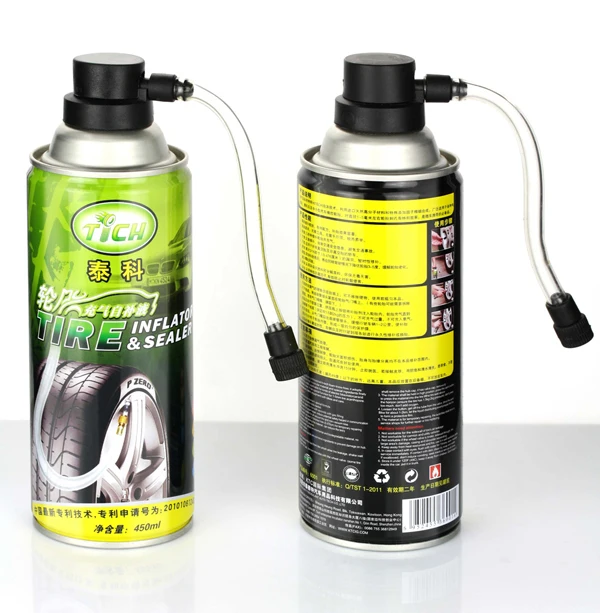 So when you’re doing an initial setup, you use about double the sealant you would when you’re just topping it off.
So when you’re doing an initial setup, you use about double the sealant you would when you’re just topping it off.
For a brand-new gravel or mountain bike tire, use about four or five ounces, and use two ounces for a road tire. These are approximate measurements, so don’t worry about getting it exactly right. “There’s no such thing as too much,” says Esherick. But it’s very common to use too little then wonder why your sealant “doesn’t work,” so be generous with it.
$34 at Competitive Cyclist
Credit: Stan's No Tubes$10 at Competitive Cyclist
Now 24% Off
$30 at Amazon
Credit: Muc-Off$30 at Amazon
The least messy way to get sealant into your tires is through the valve stem. To do this, you’ll need a valve-core remover to remove the valve core and a sealant injector to measure it out of the container and squirt it though the valve, or a pre-measured bottle with an injector tip. If you don’t have either of these, you can separate a section of your tire from the rim and just pour it in.
To do this, you’ll need a valve-core remover to remove the valve core and a sealant injector to measure it out of the container and squirt it though the valve, or a pre-measured bottle with an injector tip. If you don’t have either of these, you can separate a section of your tire from the rim and just pour it in.
Trevor Raab
Trevor Raab
If you’re pouring it in through an opening in the tire, Esherick suggests pouring the sealant in with the opening at the bottom of the tire, and then turning the wheel slowly to let the sealant run down inside the part of the tire that’s fully installed. This will allow you to finish installing that last bit of bead without making a mess. If you’re using race sealant, the larger coagulative particles are too big to fit through the valve without clogging it, so you’ll always pour it into the tire this way.
After adding the sealant, replace the valve core and inflate the tire to its specified pressure quickly to get the bead to settle in place on the rim.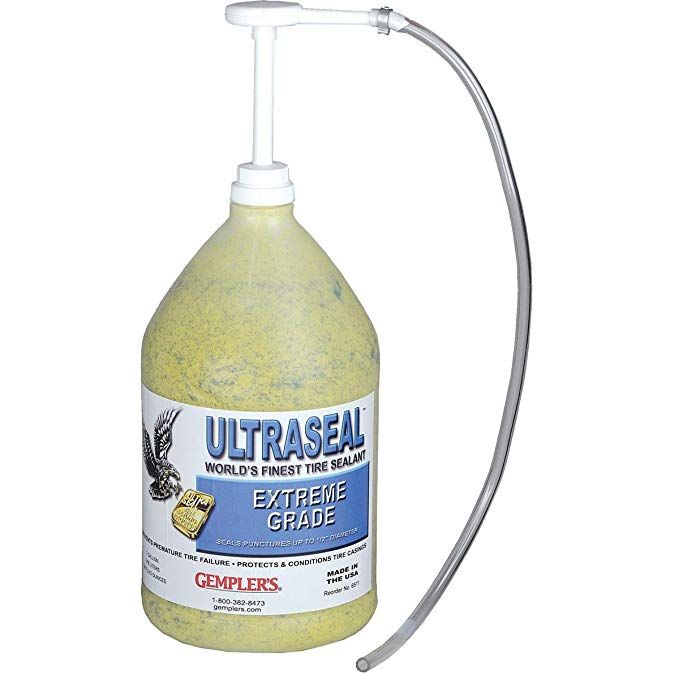 (Do not over-inflate; that can lead to explosions!)
(Do not over-inflate; that can lead to explosions!)
If your sealant is leaking out of a larger puncture rather than filling it, you can plug it by hand using a tubeless tire plug. These are little rubber strips you poke directly into the hole with a needle. The rubber will get stuck in the tire and react with the chemicals in the sealant and expand to plug the hole. And yes, you can put a bunch in your tire if you have multiple holes.
If a puncture doesn’t seal you can use a plug kit to help seal the hole.
Trevor RaabIf you get a gash in your tire that’s too big for the sealant to handle or even to plug by hand, you can remove the tubeless valve and install a regular inner tube on the rim to get home. Another thing to keep in mind is that sometimes sealant takes a bit of time to fix larger holes: You might need to pull off the trail and let it pool around the puncture for a minute or two so it can do it’s thing.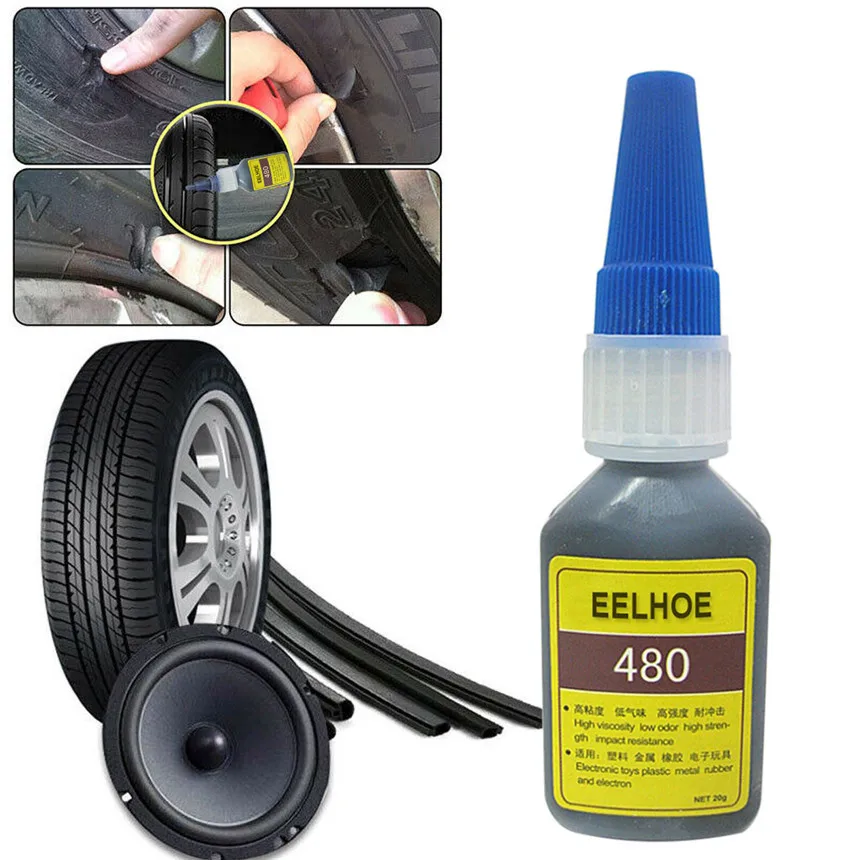
“If your tire gets a puncture that just won’t seal, it’s possible you are riding with too much pressure,” Esherick says. “And if you’re doing that, you’re not getting the benefit of tubeless tires, which is to run a lower pressure that’s more comfortable and has better traction.”
$155 at Trek Bikes
$69 at Amazon
Keep It Clean
$10 at notubes.com
Precisely measure sealant and install with no mess.
Mid-Ride Repair
$60 at dynaplug.com
Brass-tipped plugs make fixing bigger punctures easy.
“Bicycle tires are really thin and porous, which makes sealant evaporate over time and dry out,” Esherick says. That’s why it’s necessary to top off your sealant about every two to three months, even if you haven’t gotten a lot of punctures.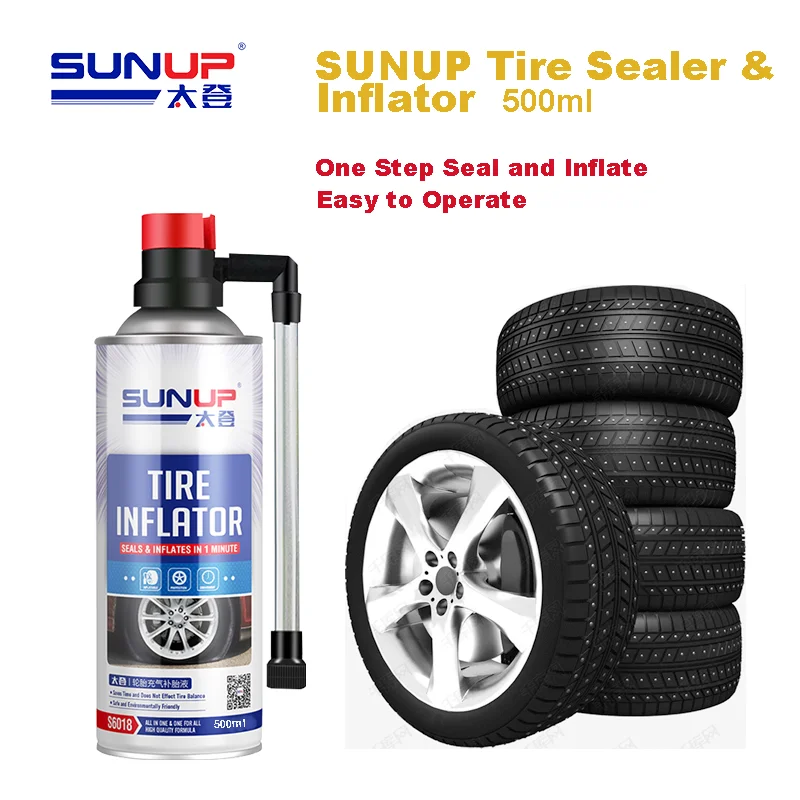
If your tire looks like this it’s time to clean it out and add some fresh sealant.
Trevor RaabAccording to Esherick, two ounces is the right amount of sealant for topping off gravel tires all the way up to 2.5-inch mountain bike tires. “If you’re up in the 2.5- to 2.6-inch range, you might want three ounces, and 2.7- to 2.8-inch tires require about four ounces,” Esherick says. “As you get a larger volume tire, you’re going to want a little bit more sealant in there.” Two ounces is enough for road tires for the first time, as well as plenty whenever you top them off.
Try to, at least once a year, take your tire completely off the rim to scrape out the dried sealant and start fresh. This preventative maintenance will keep your tires turning in time.
Riley Missel
Riley Missel is an experienced road racer, mountain biker, national champion on the track, and a former Bicycling editor.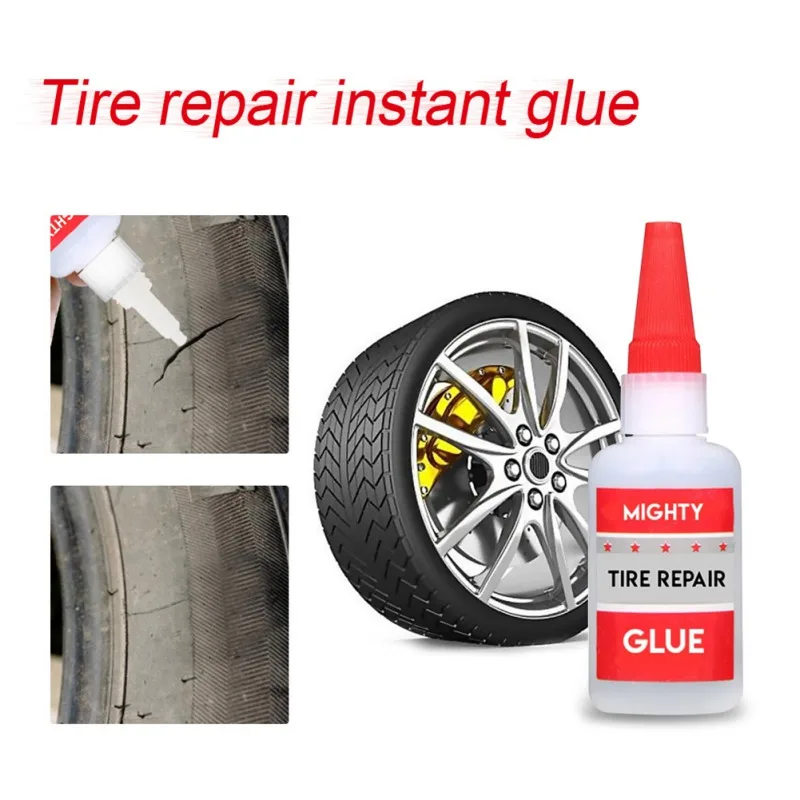 She is a USA Cycling-certified Level 1 coach, a loud and very stoked Spin instructor, and she will definitely stop the ride to pet that dog.
She is a USA Cycling-certified Level 1 coach, a loud and very stoked Spin instructor, and she will definitely stop the ride to pet that dog.
By Jim Langley
Now that the nice riding weather has returned to the northern hemisphere and spring events have sprung, I want to cover a good question for this time of year from a Minnesota roadie, Dale, who asked awhile ago:
“They say that winter may end here in a few months. I switched to tubeless tires on my Trek Domane last season. Do I need to renew the sealant in them before I start riding again? If so, how do I accomplish that?”
Tubeless tires? Sealant? Huh?To answer, let me backpedal a bit and explain to those who do not know that many road bicycles and wheelsets you might have or can upgrade to, have the option of running what’s known as tubeless tires. As the name suggests, these tires do not have tubes inside.
Why would you care if your tires had tubes inside? Two reasons: the most common flat tire is a pinch flat where you run over a rut, hole or object in the road and pinch your tube and flat. Pinch flats are sometimes called snakebite flats because they show up as two small slices next to each other on the tube – like a snakebite.
Since there’s no tube inside a tubeless tire, pinch flats become a non-issue. The other advantage of tubeless tires is a softer, more supple ride because you can run lower tire pressure since there’s no risk of pinch flatting.
On most bicycles and wheels, in order to run tubeless tires, you need tubeless-compatible rims and tires and a few ounces of sealant. Sealant is a liquid with some type of fibers inside (every manufacturer has their own secret sauce) that when you puncture, almost immediately find the hole and seals it from the inside of the tire so you can keep right on riding.
Better safe than sorry with sealantSo, Dale is asking if the sealant that was installed inside his tubeless tires needs to be renewed or if he can just keep riding with the same stuff in his tires.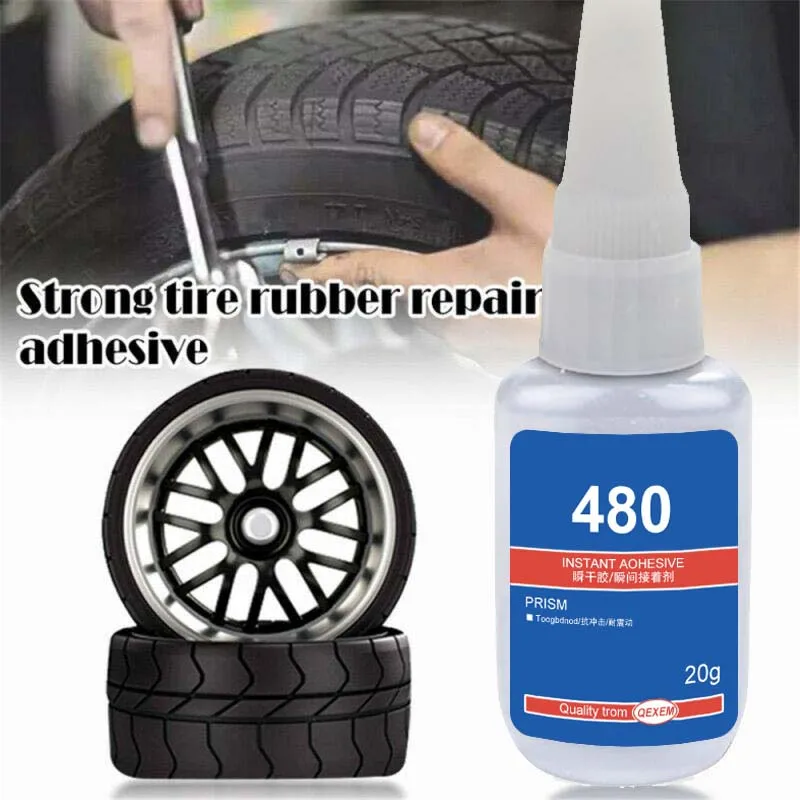 And, the answer is, Yes, it needs to be renewed. What that really means is that you have to add more sealant inside the tires.
And, the answer is, Yes, it needs to be renewed. What that really means is that you have to add more sealant inside the tires.
The reason he needs to do this is because sealant dries out, and usually a lot sooner than an entire season. In fact, depending on the type of sealant you use and the conditions where you ride, you might need to add sealant as often as once a month.
The key thing to know is that if you’re not sure how your sealant is holding up, you want to check rather than assume that there’s plenty inside. Because if you assume, that might be the day your sealant fails, and if it’s an important goal ride, the resulting flat tire could be a very bad thing.
Checking sealantThis is a relatively easy job if you can suspend your bicycle or remove and suspend each wheel vertically. With the wheel in this position, any sealant inside will tend to stay inside and not leak out. But, if you care about your flooring, it’s still a good idea to put down newspaper beneath the bike/wheel to catch any that escapes.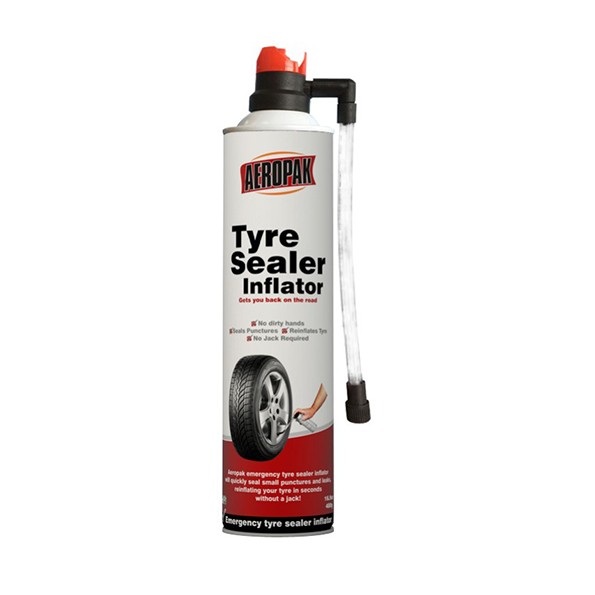
Tubeless tires usually lock tightly when inflated, so it can take a little effort to free them from the rim, which you have to do to check the sealant and add more. To do it, let all the air out of the tire and then go around it squeezing the sides of the tire together to push the tire sides and beads (the part tucked down inside the rim) toward the middle of the rim.
You should feel the tire pop and break free. Once you’ve gotten it loose like this, work on it at 12 o’clock on the wheel with tire levers to carefully remove about six inches of only one side of the tire from the rim.
By working on the top of the wheel, any sealant in the tire stays in the bottom of the wheel and won’t spill out. Then, just slowly rotate the section of tire you removed down to the 6 o’clock position and you’ll be able to look inside the tire to gauge how much sealant is still inside.
If the sealant has been in there for months, you’ll probably find some alien-looking matter inside like a science experiment gone wrong – blobs or strings.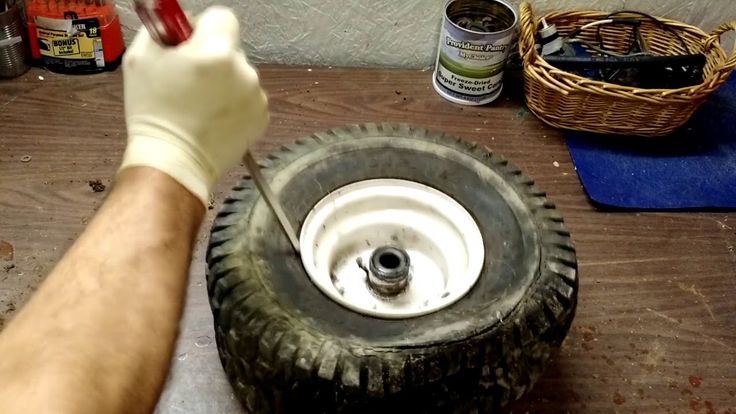 And you’ll probably only find a little liquid. These things tell you that it’s time to add a fresh dose of sealant to your tires so that you can enjoy flat-free rides again. Before you do this, you can either clean out the debris and old sealant inside, or leave it if you don’t mind the little bit of extra weight and mess – and possible noises.
And you’ll probably only find a little liquid. These things tell you that it’s time to add a fresh dose of sealant to your tires so that you can enjoy flat-free rides again. Before you do this, you can either clean out the debris and old sealant inside, or leave it if you don’t mind the little bit of extra weight and mess – and possible noises.
Read the instructions on your choice of sealant. It will tell you how much to install based on your tire size (usually 2 to 4 ounces/59 to 118 ml). Pour the correct amount of sealant into the tire. Then, carefully rotate the open part of the tire back to 12 o’clock again. The sealant will now run down inside the tire so it can’t leak out. And you can pop the tire back on at the top.
Now comes the tricky part: installing and seating the tire so that it holds air. Because there’s no tube inside, if the tubeless tire doesn’t seal/seat correctly it will just keep going flat.
As I mentioned, tubeless tires lock on during inflation and it’s this locking that seals them.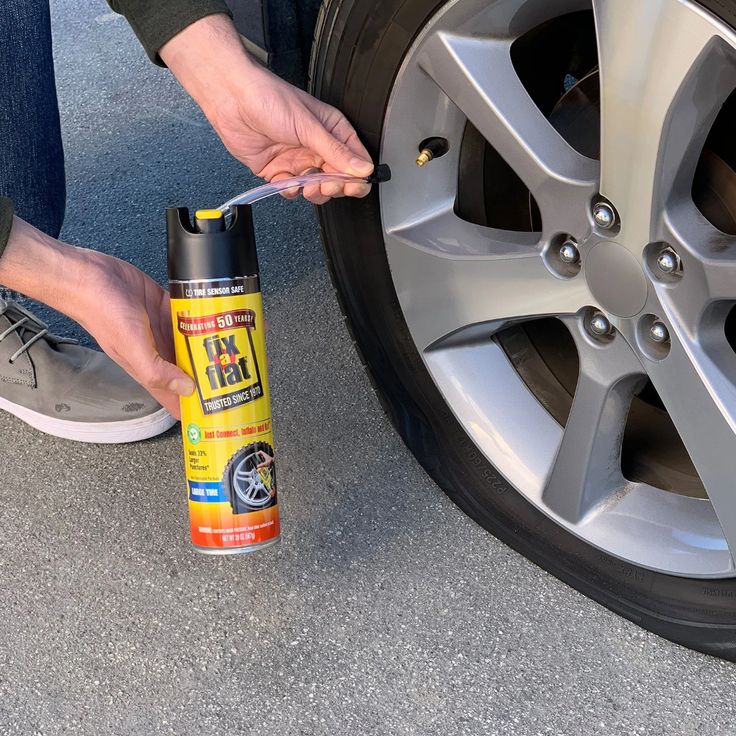 With luck, because the tire has already been seated on the rim for awhile, you will be able to inflate it and seat it with your home floor pump (these are more powerful than pumps made for taking with you on rides).
With luck, because the tire has already been seated on the rim for awhile, you will be able to inflate it and seat it with your home floor pump (these are more powerful than pumps made for taking with you on rides).
A good trick is to go around the tire with a brush wet with soapy warm water to lubricate the beads of the tire to help them pop into place and seal as you inflate the tire.
Tip: If you can’t get the tubeless tire to seal with your floor pump, find a volunteer to pump while you put both hands on the tire and squeeze the tire down onto the rim as they keep filling it with air. Keep trying and move your hands to different positions where you hear air coming out, and in most cases, working together, you can seal the tire with your hands long enough that the tire stops leaking and fills up and seats.
Most tubeless tires make several reassuring pops or snaps when they seat fully, so listen for these. You always want to spin the wheel and look carefully at both sides of the tire, too. If you see any hops or wobbles, the tire isn’t fully seated. It needs to be seated fully or the air will leak out.
If you see any hops or wobbles, the tire isn’t fully seated. It needs to be seated fully or the air will leak out.
Another way to add sealant is to do it through the valve stem. Most tubeless systems have valve stems with removable cores. Simple turn counterclockwise with a core remover tool, or gently with pliers, to remove.
Once the core is out of the way, you can use your sealant injector of choice (a syringe-like device sold by sealant makers) to pump more into the tire.
Tip: If you have been using tubeless tires for some time and paying attention to how frequently you need to add more sealant, you wouldn’t need to remove the tire to see if you are low on sealant. And instead, you would simply remove the valve core andsquirt in more sealant as needed. Using this technique it’s more likely your tubeless tire will remain seated on the rim for easy inflation and seating.
Consider tooling upShould you find it a challenge to inflate and seat your tubeless tires, and you already have a home shop or place you work on your bikes, you might consider buying an air compressor.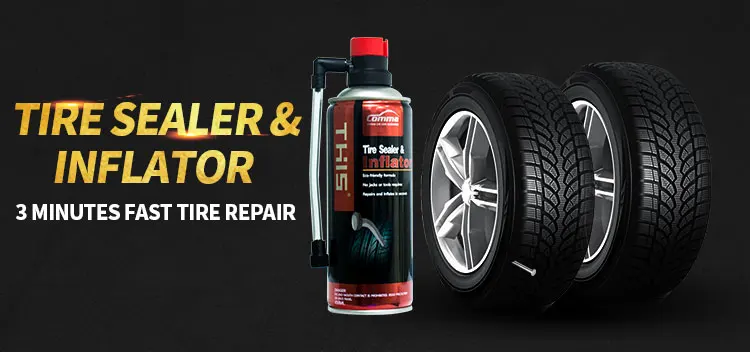 They’ve gotten a lot less expensive over the years and they come in handy for a lot more than making tubeless tire inflation and seating easy.
They’ve gotten a lot less expensive over the years and they come in handy for a lot more than making tubeless tire inflation and seating easy.
If you don’t have room for a compressor, you might look into the Bontrager Flash Charger floor pump. This trick inflator has a tank just like an air compressor. You inflate it by pumping and, when full, it provides a powerful blast of air to seat stubborn tubeless tires.
Another handy tool is one you carry for road use. In the event that your sealant has dried up and isn’t working anymore, carry a flat fix like Vittoria’s Pit-Stop (about $15) and you can inflate and inject new sealant into your tire to fix a flat fast.
Jim Langley is RBR’s Technical Editor. He has been a pro mechanic and cycling writer for more than 40 years. He’s the author of Your Home Bicycle Workshop in the RBR eBookstore. Check out his “cycling aficionado” website at http://www.jimlangley.net, his Q&A blog and updates at Twitter. Jim’s streak of consecutive cycling days has reached more than 8,000. Click to read Jim’s full bio.
Jim’s streak of consecutive cycling days has reached more than 8,000. Click to read Jim’s full bio.
An unpleasant situation, from which no car owner is immune, is a puncture of rubber. The problem arises spontaneously, and often there is no spare tire on hand to dismantle the punctured wheel and put on another one. In such cases, drivers use tire sealant, an effective chemical that can quickly seal a puncture on a tire.
Contents
Automotive sealants have appeared on the market relatively recently and have already won the trust of vehicle owners. The substance for instant vulcanization of rubber is placed in a small sealed container.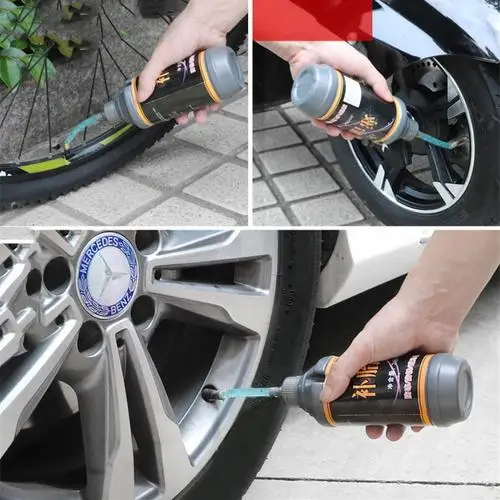 Depending on the components, tire sealants are either latex or synthetic/natural fiber blends. Sealants for express vulcanization of tube and tubeless tires offer important advantages:
Depending on the components, tire sealants are either latex or synthetic/natural fiber blends. Sealants for express vulcanization of tube and tubeless tires offer important advantages:
Instant curing compounds are classified into aerosol and liquid, the characteristics of which differ slightly. By nature, aerosol sealant is liquid, but is contained in a high-pressure can. A hose is used to introduce it, but compressed air must be completely removed from the tires. The compositions can be used for repair work and the prevention of punctures. nine0003
Important: It is important to use emergency wheel sealant in case of punctures in the tread area.
If you use tools for vulcanizing side cuts and cracks, the compositions are ineffective due to the effect of centrifugal force. It is not possible to seal the tire with sealant in case of disassembly.
To prevent the possibility of a tire puncture or cut on the track, car owners use express sealants. When the vehicle is in motion, centrifugal force helps distribute the tire sealant inside the tire. To prevent cuts in tubed tires, the sealing compound is distributed in the air cushion so that it protects the cord layer. Tire Damage Prevention Benefits:
Sealant prevents rubber delamination and improves tire temperature control when overheated. The use of puncture prevention agents simultaneously creates several levels of tire protection, prevents corrosion of the cords and increases the life of the rubber. In case of damage to the integrity of the tire, the viscous composition instantly forms a vulcanizing plug. nine0003
In case of damage to the integrity of the tire, the viscous composition instantly forms a vulcanizing plug. nine0003
Repair sealants are used to quickly seal tires when trouble has already happened. Most formulations can only be applied on fully flat tires. The agent is injected through the nipple, and as the sealant enters, the tire is filled, and foam may form at the puncture site. Benefits of punctured tire emergency sealant:
If a nail or a piece of glass is stuck in the wheel, before using the sealant, the object must be removed so that the substance reliably clogs the puncture and is evenly distributed inside the wheel. To fully restore the tire, you need to ride at low speed - this distance is indicated in the instructions.
The automotive market offers a wide range of instant wheel sealants. Products differ in technical characteristics, packaging and volume. It is worth paying attention to proven brands that have collected positive feedback from car owners and have successfully passed tests. General requirements that a tire sealant must meet:
Products differ in technical characteristics, packaging and volume. It is worth paying attention to proven brands that have collected positive feedback from car owners and have successfully passed tests. General requirements that a tire sealant must meet:
 To repair an SUV with overall wheels, this volume is not enough. The attached instructions indicate which cars the sealant is suitable for.
To repair an SUV with overall wheels, this volume is not enough. The attached instructions indicate which cars the sealant is suitable for. Attention: The effect of the use of sealants is short-lived, therefore, after repair, you need to contact the workshop for high-quality vulcanization and wheel balancing. You can drive on sealed tires at a low speed within 50 km, the distance limit is 10 km. If the agent is used for prevention, the permissible speed and mileage are indicated by the manufacturer of the composition.
The main difference between tires is the presence and, accordingly, the absence of an inner chamber. Automotive sealant manufacturers do not classify tubular tire products as a separate category. Therefore, you can use any composition of a universal type. nine0003
Automotive sealant manufacturers do not classify tubular tire products as a separate category. Therefore, you can use any composition of a universal type. nine0003
The Polish company K2 offered Tire Doctor sealant to the attention of car owners.
Universal tool, used to repair damage to any tires. It is highly combustible, so before pumping up the filled tire to the desired pressure, gas should be bled from it. It is recommended to have a powerful car pump on hand. On the 10th kilometer of the track, the train completely copes with the puncture, in the place of which an airtight plug is formed. The pressure is kept at 1.85 atmospheres. nine0003
Hi-Gear Tire Doctor, an American-made emergency wheel sealant, according to the company, is suitable for tube and tubeless tires. A wheel filled with compound hardly lifts off the ground, which indicates low tire pressure. The properties of the active components of the American sealant are exactly enough to reach the nearest tire service.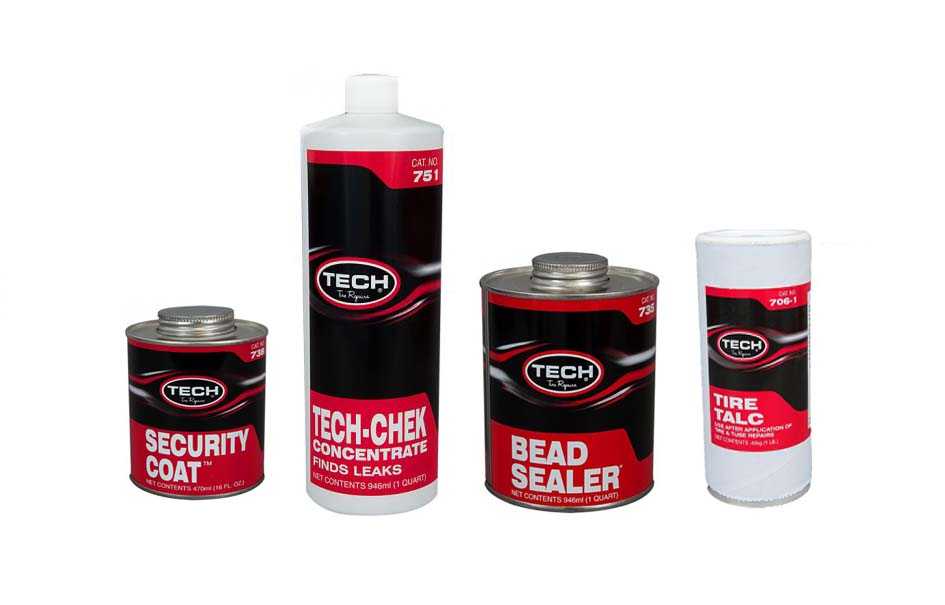
Modern vehicles off the assembly line are equipped with tubeless tyres. Fixation with discs occurs due to a layer of special rubber. Tires with a tire and a tube are installed on earlier generation car models. In terms of road safety, tubeless tires show a clear superiority - you can drive a greater distance on a punctured wheel. nine0003
Most of the sealants available on the market are of the universal type. But there are special-purpose tools that do a good job of sealing tubeless tires. Sealant Pingo Reifenpannen-Spray - according to the manufacturer's instructions, you can drive about ten km on a vulcanized tire, depending on the nature of the damage, at a speed not exceeding 50 km / h. When filled with sealant, the wheel quickly takes on an “inflated” shape. In the process of movement, the pressure decreases, but not significantly. nine0003
Products designed specifically for tubeless wheels include the German sealant Motip Dupli AG Car Tire Repair. The sealing of the tire completely occurs after a few kilometers.
The sealing of the tire completely occurs after a few kilometers.
Another effective product, Runway RW6125 Sealant, is sold in a capacious 650 ml can. The purpose of Runway Tire Sealant is to repair tubeless tires while inflating the wheel. Eliminates punctures up to 6 mm, creates the required pressure in the tire in a few minutes. nine0003
Advantages of tubeless tire sealants include fast filling of the wheel, effective sealing of punctures. The products do not cause corrosion of the cord threads, are easily pumped into tires through a fitting attached to the wheel nipple. Sealants are quickly distributed over the surface and hold pressure well up to 2 atmospheres.
Good quality Motip Black Line emergency vulcanizing sealant. In a few minutes, tubeless tires can be repaired with sealant. To use the aerosol, you do not need to disassemble the wheels. The rubber-based substance effectively removes up to ten punctures of various diameters simultaneously.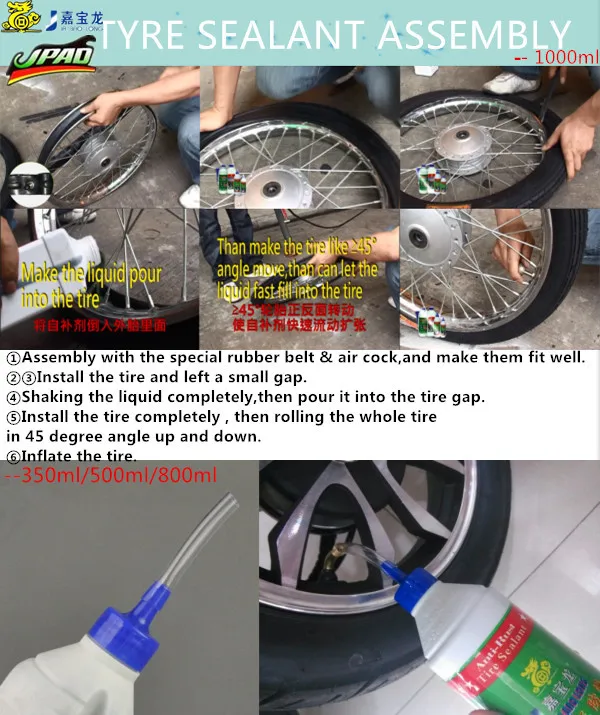 nine0003
nine0003
Note: In order to properly use emergency sealants, the cause of the puncture must be eliminated before filling the tires with a liquid compound or aerosol - a glass shard, a nail, a sharp metal object.
Some manufacturers produce universal type products. The compositions are suitable for hermetic filling of punctures in chambered and tubeless wheels. The most popular products of this line:

Special attention should be paid to tubeless rim compounds - rubber-based sealants designed to eliminate air leaks between the rim and the bead. Motorists use ready-made compounds with natural rubber and other components of Rossvik-Light, Bestpatch, Unicord, Tech. Sealing agents are applied with a brush between the rim and tire of tubeless tires, which prevents air from bleeding from the wheels. A special lubricant in the form of a concentrated paste can be applied to the tire beads to facilitate mounting / dismounting of wheels. nine0003
The main advantage of the method is that there is no need to disassemble the wheels. When using compounds, follow the recommendations of the sealant manufacturer:

After sealing is complete, check the tire pressure, bleed excess air or inflate the tire if necessary. After a few kilometers, the indicators are re-measured. When using liquid products, the work order is preserved, but after filling, turn the wheel several times to evenly distribute the composition, inflate the tires.
The use of preventive sealants helps prevent punctures, and emergency tools help to cope with damage to the wheels. Sealants reliably seal small holes, cracks, punctures, increasing the service life of automotive rubber. It is necessary to ensure that when using aerosol formulations, the tires are not pumped over. Substances can be used exclusively for patching damage on treads and on undeformed wheels. nine0003
Substances can be used exclusively for patching damage on treads and on undeformed wheels. nine0003
Tire sealant is very popular in the automotive chemicals market. This tool has appeared recently, but has already won many fans. With the help of sealant, you can quickly eliminate a hole in the wheel in order to easily get to the tire fitting.
Contents:
There are various types of sealants on the market that are suitable for sealing bicycle and car inner tubes, as well as for repairing tubeless tires. Depending on the composition, the puncture sealant can be:
Most often, tire bead sealant is produced in cylinders filled with the main compound. Also, these products are produced in metal containers with a brush. Sometimes a set of a patch and a napkin soaked in a degreaser is attached to the sealant. According to the purpose, tire sealants can be divided into repair (emergency) and preventive.
nine0003
back to contents ↑
You have to use such bead sealants when a wheel puncture has already happened, urgent tire repair is required. Most compounds work with a completely flat tire, are introduced through a nipple. Repair sealants most often have an aerosol form with a tube tip, so applying them with your own hands is easy and convenient. Gradually, due to the increase in pressure, the tire begins to gain volume, restoring its normal shape, and foam is released from the punctured areas. The rest of the product in liquid form does not always need to be removed from the wheel, most often it is recommended to leave it to prevent new defects. nine0003
back to contents ↑
These products are designed to prevent punctures in tube and tubeless tires. They are also poured through the nipple, and when the car moves, they are evenly distributed inside the tire under the action of centrifugal force.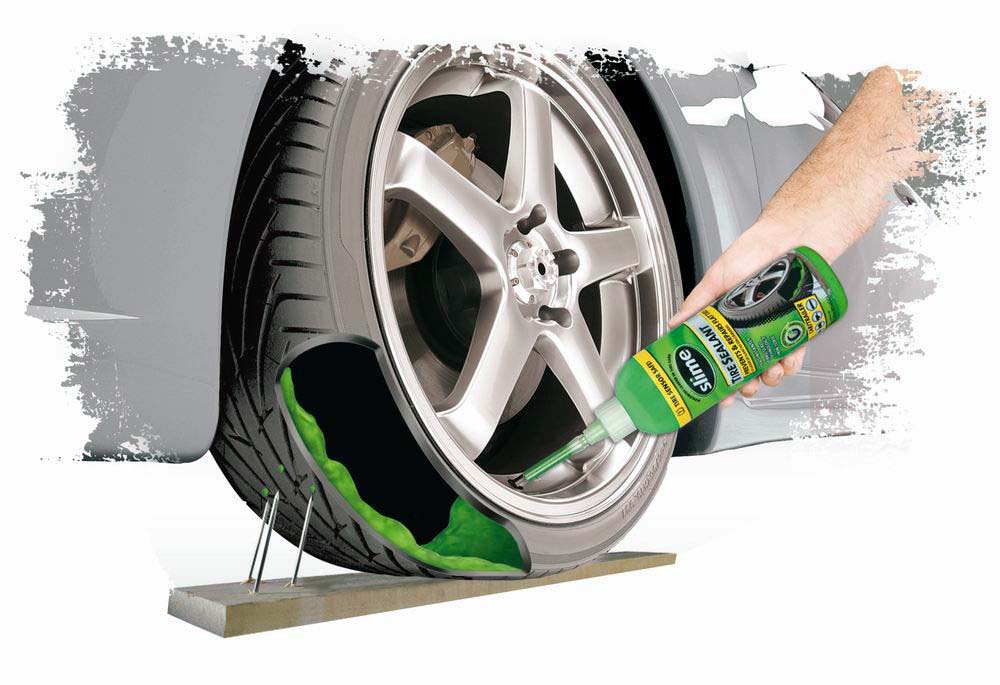 If a hole does happen, the pressure in the tubeless tire will remain the same, because the sealant will rush to the hole and seal it. In the presence of a chamber, the composition will be in an air cushion between the tread layer and the balloon, working in a similar way. nine0003
If a hole does happen, the pressure in the tubeless tire will remain the same, because the sealant will rush to the hole and seal it. In the presence of a chamber, the composition will be in an air cushion between the tread layer and the balloon, working in a similar way. nine0003
Some sealants have additional features:
The last mentioned property is due to the fact that the wheels with chambers are able to heat up due to the presence of an air gap, and the sealant cools the tread due to the low boiling point. nine0003
back to contents ↑
To purchase a really high-quality tire sealant, you need to consider the following recommendations:
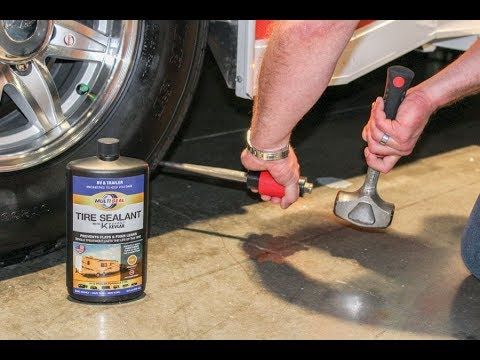 Some products crystallize when the temperature drops below zero, so they are not suitable for the winter season.
Some products crystallize when the temperature drops below zero, so they are not suitable for the winter season.  For tires with large dimensions, you will have to purchase several bottles of sealant. nine0010
For tires with large dimensions, you will have to purchase several bottles of sealant. nine0010
back to contents ↑
Each tire sealer comes with a manufacturer's instruction that explains in detail the procedure. For most products, the steps are as follows:
 nine0010
nine0010 The first ten kilometers after the repair is necessary to move at low speed: this will help the composition to better distribute inside the tire. After a minor damage, you can continue to use the wheel, and with a serious puncture, it is better to get to the auto repair shop as soon as possible. You need to check the tire pressure again after 10-20 km to make sure that there is no pumping, because some sealants are active for a long time. nine0003
Tips for using sealant:
back to contents ↑
Some craftsmen make tire sealant from improvised means. Since almost all factory sealants are based on raw rubber (rubber), you will need to buy such material and dissolve it in gasoline. nine0162 It is best to purchase imported rubber, which contains a minimum amount of impurities.
Any gasoline that is available will do, it is not necessary to purchase high-octane. Even kerosene, diesel fuel is suitable, although with gasoline the finished product will be of better quality. The exact proportions will have to be selected independently.
Next, cut the rubber into small pieces and gradually add gasoline so that the finished product has a semi-liquid consistency. nine0161 This sealant can be poured into the tire or, if required, applied to the tire with a brush according to the type of lubricant.
to contents ↑
Among the variety of sealants for tires, you can get confused: such a large assortment is presented in stores. The following are quality compounds that will help repair a punctured wheel.
"Anti-Puncture" Sealant is universal, suitable for the prevention and repair of holes. The package is enough to close ten punctures no more than 6 mm in diameter. The composition is suitable for tube and tubeless tires. For one wheel 14-15 inches you need 300-330 ml of the product, for 15-16 inches you need 360-420 ml. When repairing SUVs, trucks, you should purchase at least 480 ml of the product. nine0003
back to contents ↑
One of the most popular tire sealants, considered ideal for emergency repair of tubeless tires. Hi-Gear Tire Doctor can be used on the road, in case of a hole it will help you get to a car service. This American product is considered reliable, durable, but if possible, they should only seal small punctures.
Liqui Moly brand sealant is based on a rubber solution, excellent for tubeless, tube tires. The composition in the form of a spray is odorless, safe for humans and the environment, it can be used even indoors. nine0161 Due to the risk of fire, the product must not be handled near naked flames.
This brand of repair compound is designed to repair punctured, cut tires. One bottle is enough for a 16" wheel. When introduced, the rubber compound fills in existing defects, and the remaining mixture becomes the prevention of new cuts, continuing to remain inside the tire. The sealant creates high pressure, which reduces the risk of a flat tire on the road. The disadvantage of the tool is this - it causes some imbalance of the wheels, so after the repair it is better to check the car in the service. nine0003
back to contents ↑
The sealant is used for car tires and is not suitable for repairing bicycle and motorcycle inner tubes. It quickly seals small punctures on tires up to 16 inches in diameter. The tool can be used for tubeless and chamber tires, but the efficiency when working with the former is much higher. In cold weather, the sealant must be warmed up well, otherwise the quality of the repair will decrease.
Considered the most popular tire solution for trucks, SUVs, and large vehicles. Its packaging is enough to process a tire with a diameter of 22 inches. The tool is suitable for machines where an automatic pressure control sensor is installed. The quality of the Japanese product is very high, the sealing properties are serious, but the cost cannot be called budgetary.
Inexpensive on-road repair of tubeless tires. It helps to inflate the wheel to a pressure of 1.4 atmospheres and get to the service without any problems. The sealant is available in the form of an aerosol in a convenient container with a hose, it is comfortable and easy to work with it. nine0003
back to contents ↑
Effective sealant, allows sealing holes up to 6 mm in diameter. Suitable for old wheels with tubes and tubeless tires. MANNOL Reifen Doctor acts quickly, sets in just a minute, is safe for steel wheels, does not provoke the development of corrosion. Inside the tire, the sealant will be in liquid form, but upon contact with air it immediately polymerizes, therefore it can also be used to prevent punctures. nine0162 Minus funds - low pressure after repair, the need for additional pumping of the wheel with a pump or compressor. The maximum puncture size for sealing is 6 mm.
back to contents ↑
The setting time of this product is also minimal - 1-2 minutes, it is suitable for cars, trucks and other equipment. The price of the sealant is low, but it serves as a temporary remedy until a visit to the tire shop, and the maximum driving speed should not exceed 20 km / h. nine0003
Latex-based sealant, has a temporary effect until a trip to a car service. After the bay, you need to drive at least 5 km at a speed of 35 km / h in order to distribute the compound on the inner surface of the tire. The sealant will not cope with large punctures, so it is not suitable for holes larger than 4-6 mm in diameter.
back to contents ↑
Runway Sealant is suitable for motorcycle, bicycle and car tyres. It is sold in a can with an extension hose, the volume of which is 650 ml, which is enough to repair two wheels. nine0161 Due to the nature of the composition, do not allow the product to come into contact with the skin or mucous membranes!
back to contents ↑
Easy to use, fast acting and effective product. It is completely safe and non-toxic, easily copes with holes and cracks up to 5 mm in size, suitable for trucks, cars and bicycles. Sealant is ideal for use on the road as an emergency tool, although the "patch" made by him will be quite durable. nine0003
Sealant produced by one of the most famous brands of tires, adapted to all car tires. It is based on latex, while there are no harmful additives, toxic impurities. In addition to safety for humans, the sealant is characterized by the absence of a destructive effect on the wheels. The composition allows you to do without a spare tire, carrying out repairs in emergency conditions.
back to contents ↑
This American made product is highly regarded by consumers for its high quality. It copes well with tire damage, has a more liquid texture than analogues, so it quickly spreads over the inner surface of the tire. The effectiveness and long service life of the sealant (up to 7 months) are due to the presence of natural rubber and composite microcrystals in the composition.
Repairs tire punctures up to 1 cm in diameter, sealing air leaks by forming a “plug”.